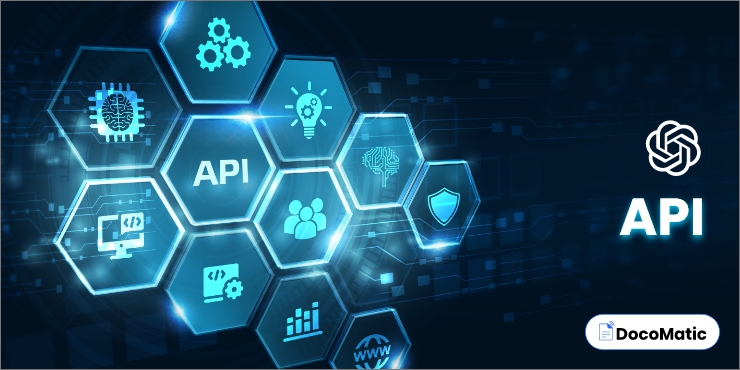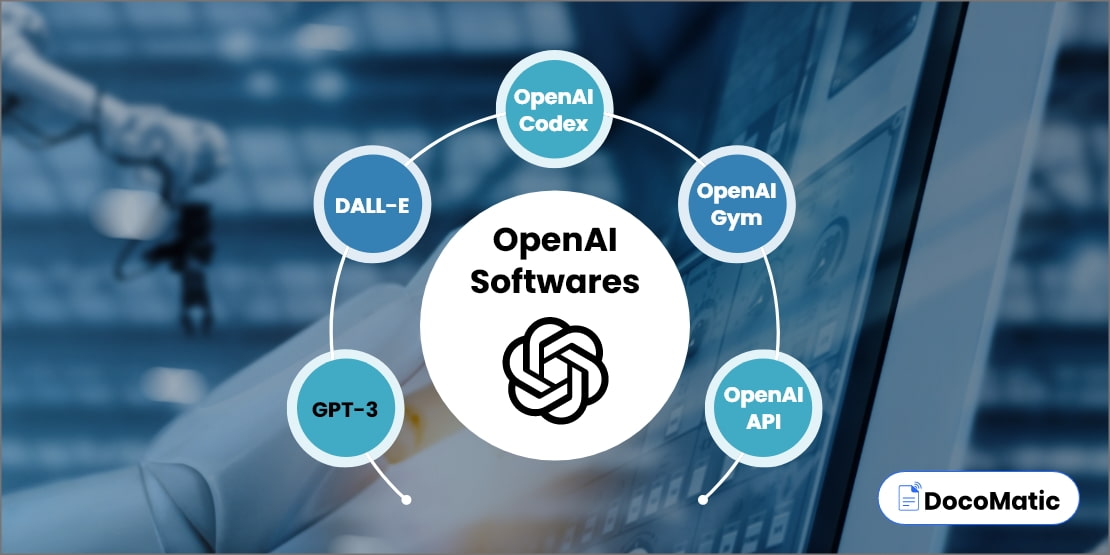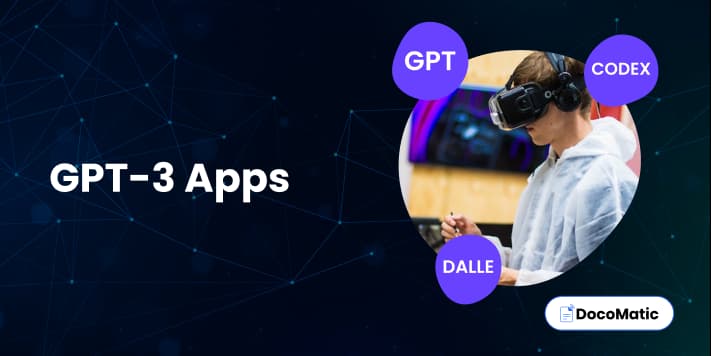There is perhaps no other artificial intelligence company that has gained as much popularity as OpenAI, and for a good reason. Their AI software solutions are regarded as some of the most innovative and reliable in the entire industry for commercial and research purposes.
While you might already know what exactly is OpenAI and its popular products, such as DALL-E and ChatGPT. They do also have other AI products in store for those that need them. Currently, OpenAI has made a range of 5 AI products available for the public market.
The true utility of AI products often relies on how companies are able to train and configure them to best suit their needs. To see how OpenAI’s products can be used by companies and individuals, we will look at what their offerings are in detail to learn more about their potential use cases.
Table of Content
List of Software from OpenAI
This list of products for OpenAI only features the current fleet of products from the company. It does not include previous versions of current software to keep the list up to date. Let us now start off the list by looking at the most infamous product from OpenAI.
1. GPT-3

The Generative Pre-trained Transformer 3 or GPT-3 by OpenAI is a large language model with highly advanced deep learning abilities. With over 175 billion parameters, it dwarfs its predecessor GPT-2, which only had 1.5 billion parameters to work with.
The main purpose of GPT-3 is to actively help companies using its Natural Language Processing (NLP) abilities. This superior NLP ability is what allows it to write entire essays that are nearly perfect with simple one-line prompts.
GPT-3’s language understanding powers also make it a suitable option for translating and summarizing existing content within minutes with a relatively low margin of error. This is why it has been seen used as a chatbot or virtual assistant for a whole bunch of companies.
The ways to reduce operational costs with such a language model are limitless, which is why it has seen the most interest for investors and individuals alike. Your pricing will vary depending on the variant that you choose OpenAI offers multiple variants of the language model.
Pricing:
The Pricing of GPT-3 varies depending on what variant you opt for and what you use it for. These variants mainly differ in performance, making the higher-priced options more relevant to the consumer. They give you a fixed number of tokens that can be substituted for a certain number of words.
Ada: $0.0004 / 1K tokens
Babbage: $0.0005 / 1K tokens
Curie: $0.0020 / 1K tokens
DaVinci: $0.0200 / 1K tokens
2. DALL-E

DALL-E brewed quite the stir when it first hit the market in November 2022. What separates DALL-E from GPT-3 is the output style. Instead of delivering text in response to queries, DALL-E generates images that illustrate the given prompt.
The superior image-generation abilities of DALL-E literally have no bounds. Absolutely any given prompt will be crafted into an image within seconds according to the AI’s understanding. While the results might not be perfectly fitting to your requirements, you can always fine-tune the prompts to get the desired result.
It can be very useful in the hands of industries that require a lot of digital art at a rapid rate. Industries such as graphic design, fashion, and marketing can use DALL-E to automate their regular tasks and get them done faster than ever without having to pay for multiple designers.
As you can probably imagine, this created fear in the industries where designers are employed. though the fear was short-lived as you cannot get custom designs that fully match your needs from DALL-E, and you have to pay for every single image generated by the AI.
Pricing:
Because generating images is far more complicated than generating text, it is also more expensive. This is why DALL-E charges you based on the resolution of each and every image that you generate using it. The image resolutions and their prices are listed below.
1024×1024 $0.020 / image
512×512 $0.018 / image
256×256 $0.016 / image
3. Codex

Codex is an excellent AI product for developers as it has the ability to create functional programs from simple human language. This is because it, too, is based on the GPT-3 natural language processor making it highly capable of interpreting casual human text with ease.
By simply providing normal human descriptions, you can have Codex create functional lines of code for you in a flash. This drastically cuts down the time required to manually develop any bit of software. It is also a brilliant option for developers if they want suggestions.
This is because Codex can recognize the software based on the previous prompts entered, allowing it to contextualize and deliver suggestions to improve your software. This can be invaluable in the hands of product designers that are looking for ways to improve their software constantly.
Pricing:
The pricing for Codex has not been released yet as it is in the private beta stage, making it inaccessible to most. However, it is available to those that use the OpenAI API free of cost so that they can develop and understand Codex better.
4. OpenAI API

The OpenAI API is a product that companies are mostly looking forward to. This is because it is basically everything OpenAI has to offer in one accessible package. The cloud-based API offers a whole bunch of features, some of which are not available by themselves.
Features such as access to deep learning, computer vision, natural language processing, and more are made available with little room for error. They also have massive data repositories to use to generate highly accurate results as fast as possible.
Because it is an API, you can integrate GPT-3, DALL-E, and Codex into your existing applications, making it that much easier to take advantage of the abilities offered by OpenAI. The API can also be scaled to match your particular use case with ease, adding to its versatility.
The price for this API mainly depends on the features that you utilize. The possibilities afforded by having all of these solutions in one API make it a force to be reckoned with. This is why companies are willing to pay for the API and its features so readily.
Pricing:
The pricing for the OpenAI API is calculated based on tiers. While the base tier remains free for a limited number of requests, you will have to pay to have access to a larger number of requests. The fixed plans can be easily explored on RapidAPI.
5. OpenAI GYM

OpenAI GYM is an incredibly handy tool for training AI learning algorithms. The toolkit can be used by developers to test and accurately evaluate the performance of the machine-learning models with ease. This is done by putting the model through multiple comprehensive tests.
The model is tested and refined by going through reinforcement learning. This method is highly effective at refinement as it simulates the way in which training is conducted in humans. It is done by simply giving the model outcomes based on the result that it provides.
If the learning model provides a desirable result, it is reinforced by giving it rewards. However, if it fails to deliver good results, it is penalized. This form of training and evaluation is highly effective and thus is preferred by a lot of developers.
One benefit of OpenAI GYM is that it has a standardized environment to more accurately rank and compare models against each other. By offering such amazing utility, OpenAI has made itself indispensable to some developers.
Pricing:
Because OpenAI GYM is an open-source program, it is available to the general public free of any cost whatsoever. This free accessibility has received a very positive response from the developer community.
How do OpenAI Products Stack up Against the Competition?
Much like any other company, there are a bunch of advantages and disadvantages of OpenAI. While there are suitable alternatives for all the software offered by OpenAI, there are reasons why people still choose to stick with OpenAI.
This is mainly due to how they develop their products to be exponentially better than their previous versions. The best example of this is their natural language processing model GPT, which has seen multiple revisions and updates that have been leaps and bounds ahead of its predecessor.
The best example of this is the leap from GPT-2 to GPT-3, where they increase the number of parameters given to the AI from 1.5 billion to 175 billion paraments. This is shown by the estimated parameters of the future GPT-4 at 100 trillion parameters.
Combining this with their unrelenting dedication to developing the AI world, further demonstrated by their interactions with the public community, makes them very well-liked by companies and developers alike.
FAQs
Chinchilla does outperform GPT-3 in certain applications due to the sheer amount of tokens that were used to train the language model. This goes to show the importance of tokens in the training of large language models.
While it is uncertain what the future holds in terms of products offered by OpenAI, the biggest release that is awaited by many is GPT-4. It is rumored to have over 100 trillion parameters which would make it the largest language model in the world by a long shot.
OpenAI codex is very versatile as it supports a grand total of 12 programming languages, making it highly capable of multiple development applications. It supports languages such as Python, Go, PHP, Ruby, Javascript, Shell, and more.
Conclusion
Given the amount of time that OpenAI has dedicated to delivering highly capable AI software to consumers, they have consolidated its place as one of the most reputed companies in the field.
This is why so many companies look at OpenAI as their primary option when looking for AI software.
Their previous products stand as a testament to their brilliant levels of innovation and improvement. However, it is not as if competitors are staying silent in this race, as they, too, are constantly developing models that hold the potential to outperform OpenAI’s products.
With OpenAI monetizing its models, it becomes increasingly easy for competitors to place themselves in the market. Nonetheless, OpenAI’s solutions have established themselves as the industry benchmark regardless of the numerous competitors that it faces.






